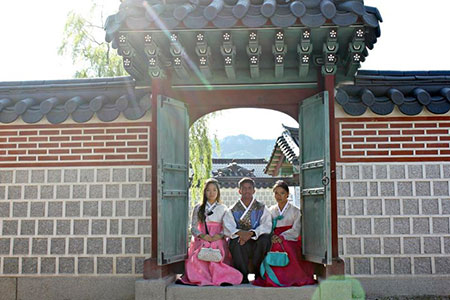The 62nd Superintendent of the United States Naval Academy, Vice Adm. Walter Carter Jr., visited Recruit Training Command (RTC) and delivered remarks at recruit graduation, March 18.
Carter served as the reviewing officer at the ceremony that had 10 divisions with 671 Seaman Recruits entering the Fleet.
“The program [at RTC] has always been rigorous, demanding more from recruits than they probably thought possible of themselves,” said Carter during his remarks to the graduating recruits and more than 2,600 guests in attendance. “It has to be tough, we need your best, the country demands the very best, and Great Lakes provides it to you.”
 |
| Photo by Brian Walsh |
As the superintendent of the United States Naval Academy, Carter oversees and prepares young men and women as they become professional officers of competence, character, and consequence. Each year, the Academy graduates approximately 1,000 ensigns and 2nd lieutenants to the Fleet and Marine Corps, roughly one-third of the total number of officer accessions each year.
Recruit Training Command, on average, graduates approximately 39,000 Sailors per year. Forty-eight graduations are held each year to celebrate the accomplishments of recruits who have completed all training requirements, officially becoming Sailors.
Also present during the visit was the command master chief for the U.S. Naval Academy, Command Master Chief Russell Smith. Carter and Smith were escorted by Capt. Doug Pfeifle, commanding officer, RTC, to the graduating recruits’ Pizza Night where the guests had time to meet, share their experience and offer advice to the new Sailors.
 |
| Photo by Brian Walsh |
Carter and Smith also visited the USS Triton and came aboard the USS Trayer (BST-21). The 210-foot Arleigh Burke-class destroyer simulator is the largest in the Navy and is the site of “Battle Stations 21,” which culminates recruits' eight weeks of training during boot camp.
During the graduation ceremony, Carter acknowledged the staff, parents, friends and mentors of the recruits and thanked them for playing a role in their Sailor's development from civilian to Sailor.
“The Recruit Division Commanders, instructors, and staff at RTC have taken on a unique and honorable challenge of shaping recruits into U.S. Navy Sailors. We thank them for their dedication," said Carter. “But above all, we acknowledge these Sailors’ families and friends for the integral role they’ve played. You helped shape your recruit into a person who wanted to stand up for this country, who understands the Navy core values of honor, courage and commitment. And during the past eight weeks, you have tirelessly supported them. Today, we also welcome you into the Navy family.”
Carter also touched on new opportunities for the Sailors entering the Fleet.
“Sailors, you are entering the Naval service at a time of great change, an evolution of what the Navy is, platforms in which we serve, and the enemy we fight. You are entering the Navy as we open all combat roles to women. Indeed, women in future classes — maybe even members of this class — will have the opportunity in combat roles none of your predecessors have ever had,” said Carter.
RTC is primarily responsible for conducting the initial Navy orientation and training of new recruits. The command is commonly referred to as “boot camp” or “recruit training.”
Boot camp is approximately eight weeks, and all enlistees into the United States Navy begin their careers at the command. Training includes physical fitness, seamanship, firearms familiarization, firefighting and shipboard damage control, lessons in Navy heritage and core values, teamwork and discipline. Since the closure of RTCs in Orlando and San Diego in 1994, RTC Great Lakes is, today, the Navy’s only basic training location, and is known as “The Quarterdeck of the Navy.”
RTC is overseen by Rear Adm. Stephen Evans, commander, Naval Service Training Command (NSTC), headquartered in Building 1; the historic clock tower building on Naval Station Great Lakes, Illinois. NSTC oversees 98 percent of initial officer and enlisted accessions training for the Navy. NSTC also oversees the Naval Reserve Officers Training Corps (NROTC) at more than 160 colleges and universities, Officer Training Command at Naval Station Newport, Rhode Island, and Navy Junior Reserve Officers Training Corps (NJROTC) and Navy National Defense Cadet Corps (NNDCC) citizenship development programs at more than 600 high schools worldwide.
Learn more on the RTC website or follow on Facebook.


















